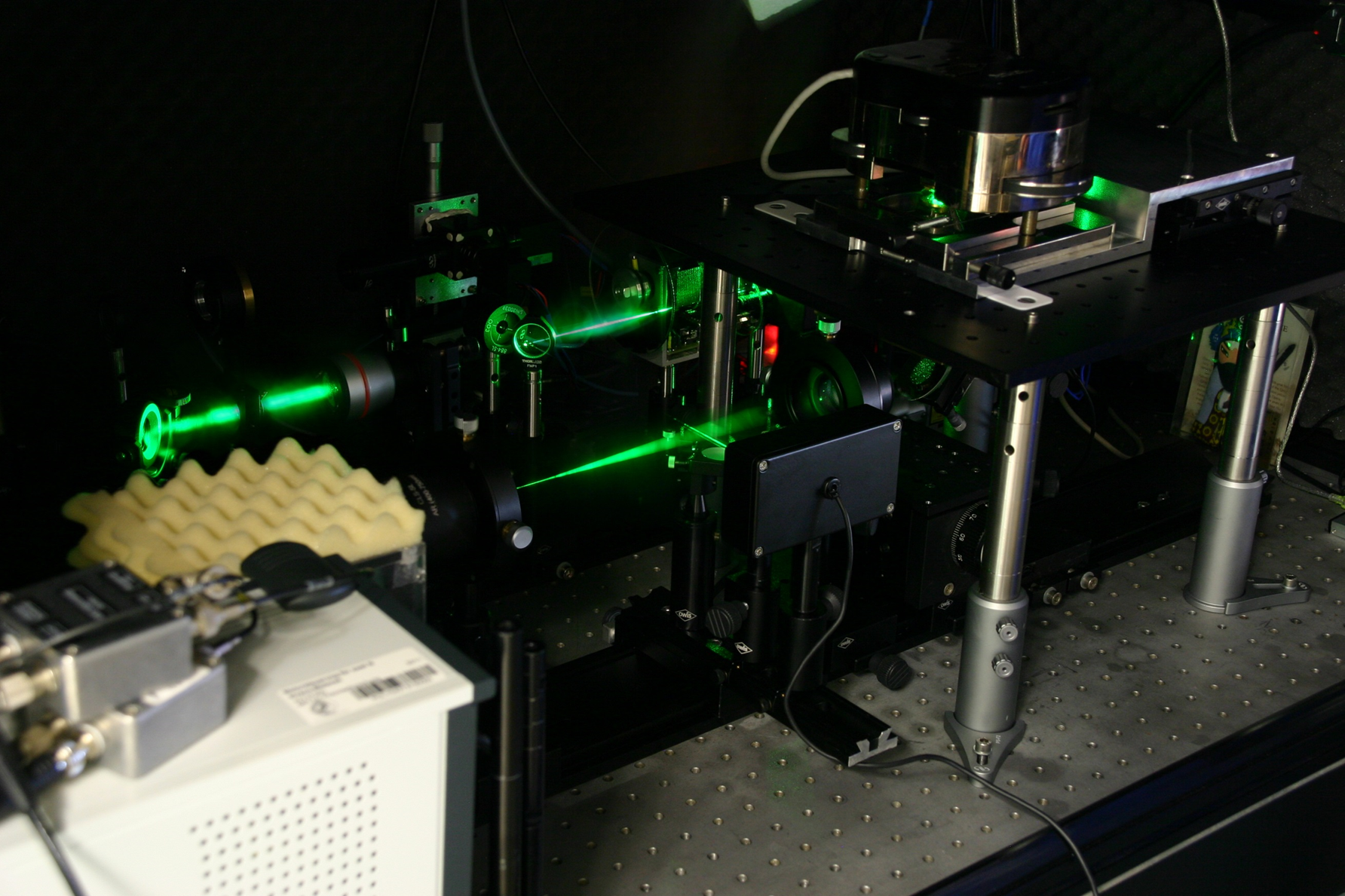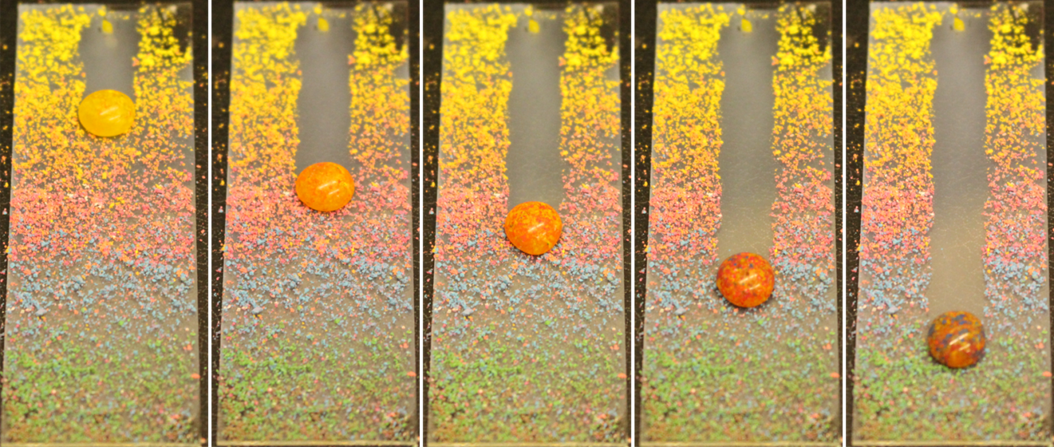 |
| The front view into the homemade LSCM setup. |
Frank Schellenberger studied Physics at the University of Mainz. Already as an undergraduate he started to work on image evaluation of wetting phaenomena.
For his diploma thesis he built a home-made inverted Laser Scanning Confocal
Microscope (LSCM) with
Periklis Papadopoulos which is combined with an Atomic
Force Microscope (AFM) to image the shape of the meniscus between the particle
and the liquid film and to measure the corresponding capillary force
simultaneously.
In his PhD thesis in the
group of Hans-Jürgen Butt at the Max Planck Institute
for Polymer Research (MPI-P), Mainz, he used and developed laser scanning
confocal microscopes for the investigation of liquid contact lines. Preparation
of structured super-hydrophocic surfaces and lubricant-infused surfaces for their
characterisation. He received his doctoral degree from Mainz University 2018.
 |
| A water drop removing dirt from a slightly tilted super-hydrophobic surface. Time evolution from left to right. The drop diameter is circa 5 mm. |
For several years during his studies, he had great pleasure in teaching chemistry, biology and medicine by supervising students in exercise groups and practical courses in physics. During his PhD he he was responsible for the conception of exercises, exams and the organization of the practical lessons. For two semesters he gave the physics introduction seminar to 300 medical students each semester. Thus, he was able improve to perfection his didactic skills and passion for explaining complex issues in a simple way.
His interest in art led him to create illustrations which were also used as the cover image of the Physik Journal or as a calendar page, for example.